Forts exemplify much more than the ruins chronicling the past. They epitomise country’s art, culture and architecture and are weaved into history through the rigours of time. In this second of the three-part series on The Forts of India, Akul Tripathi showcases five of them known for their distinctive ethos and majesty and dwells on the tumultuous times they thrived in.
Text & Photographs: Akul Tripathi
It’s a vast country. And in its vastness, it encompasses an endless history, limited only by the seeker’s urge and determination. The history itself is not unyielding, just particular about who it lets in. Testing to see who takes the effort to approach its reclusive, brooding, often intimidating presence. A presence manifested in a thousand different ways – in stories, and idioms, and fables. Sometimes in gossip, and most assuredly in the physical structures that are the receptacles of ages long gone.
Dwellings – of man and God. The temples, the homes, the palaces and the forts that stand as symbols to prove time exists and everyone has a past – the Gods and those who worship them. Among these time keepers, the homes and palaces speak of individuals, but the forts – they represent all the humanity that once existed in that particular geography.
The stories of these forts are not just those of its makers, but the story of a weave of time itself…
Hari Parbat Fort
On the banks of the Dal Lake, in the heart of Srinagar, the summer capital of Jammu & Kashmir, keeping fixed in its gaze both Shankaracharya and Hazratbal, stands the guardian of Srinagar – the Hari Parbat Fort. Originally built by the Mughal Emperor Akbar, it is the only fort in the valley. In due course, its occupant came to represent the ruling power in Srinagar. Despite being always in the line of sight of the several thousand tourists who come here every year for the scenic beauty of Kashmir, few people have ventured in, or know its tumultuous history which in many ways represents the history of Kashmir.
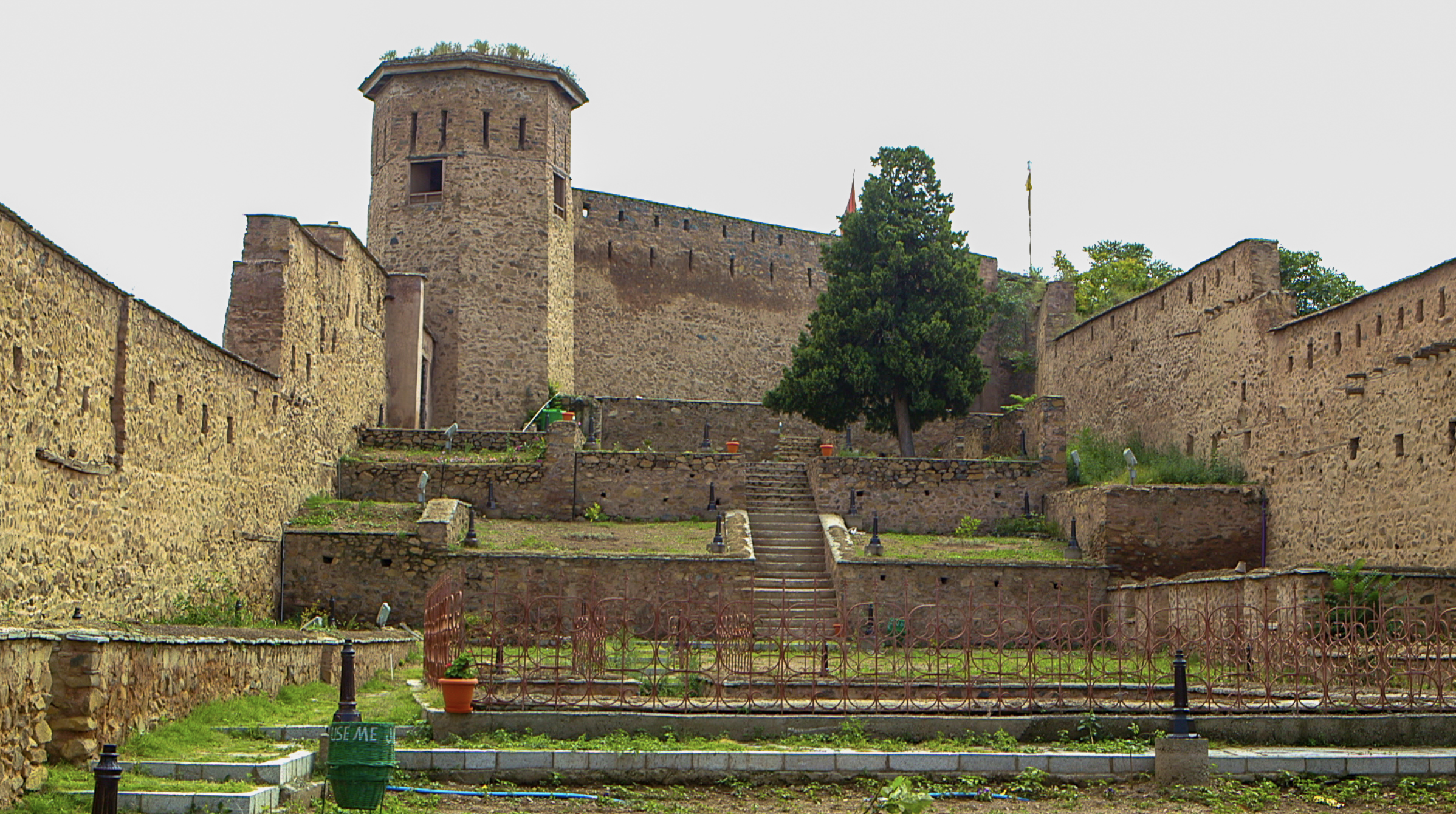
As per legend the site of the hill was once a huge lake wherein a demon called Jalobhava used to live. The inhabitants approached Goddess Parvati for help who took the form of a bird and dropped a pebble on the demon`s head. The pebble kept expanding until it became the present hill and crushed the demon under it. Some say that the bird was a myna called haer in Kashmiri from which Hari Parbat takes its name. She is worshipped as ‘Sharika’ in Shri Tsakra, (an emblem of cosmic energy pervading the universe) the temple on the western hill of the slope and is the ishta devi of the valley.
The fort was first built by Akbar when the Mughals annexed Kashmir to the Mughal empire in 1586. His army ousted Yusuf Shah Chak and exiled him to Bihar. It provides a panoramic view of the city of Srinagar or the Shahr-e-khaas as the Afghans called it. There were frequent rebellions for some years, following Akbar’s conquest of Kashmir. Some say that one such uprising was by a group of people called Dilawars and to protect the Mughal soldiers and courtiers, the great kalai meaning wall was built.
The great wall stretches 4.75 km. and is 10 m. high and some reckon it to be the longest ancient wall in India. It took 21 years to build the wall that surrounds the hill and cost the Mughals a reported ₹one crore and 10 lakhs between 1597 and 1618. Akbar wanted to build a city within the fort walls called Nagar Nagar and his nobles and courtiers had built houses within the fort walls – a plan that was never fulfilled. The rulers had also built several palaces inside the fort. Many of the buildings no longer exist but several Mughal structures, including a hamaam (bath), a mosque, and a sarai (inn) built by Dara Shikoh, still exist.
The Mughals ruled Kashmir till 1752, after which the Durrani dynasty of Afghanistan snatched Kashmir from the Mughals, reportedly at the behest of Kashmiri noblemen who were distraught with the inefficient Mughal administration. Their rule of 67 years was one of terror. Maharaja Ranjit Singh of the Sikhs won Kashmir from the Afghans, again, reportedly at the request of Kashmiri noblemen who took a risky and secret trip to Lahore, the capital of the Sikh Kingdom. The Sikhs ruled from 1819 to 1846. In 1846, the region was given to Dogra ruler Ghulab Singh for maintaining neutrality in the Anglo Sikh war which the British won. From 1846 to 1947, the Dogras ruled Kashmir under three rulers – Ghulab Singh, Pratap Singh and Hari Singh. Hari Singh signed accession to India and the army entered Kashmir, and used the fort to fight off the Pakistan sponsored irregulars who had occupied the valley. Till date it remains under the care of the Indian army…
Janjira
There are hill forts, and forest forts, and sea forts, and river forts. And then, on the western coast of India, 160 kms from Mumbai is Janjira – a fort on an island. Nay! A fortified island!
The story of Janjira Fort begins in the 16th century. The local inhabitants, the Kolis of Rajapuri village wished to ensure their safety from seafarers and pirates that were a constant threat via the Arabian Sea. As such, they decided to reinforce an island half a kilometre away from the shore of their village. Between 1522 to 1527, their Chief, Ram Patil, also referred to as Rama Koli, built a wooden fort around the island, which was known as the ‘Medhekot’. The Nizamshah of Ahmednagar realised the importance and strategic location of Medhekot, and sent his Siddi commander Piram Shah along with three ships to secure it.
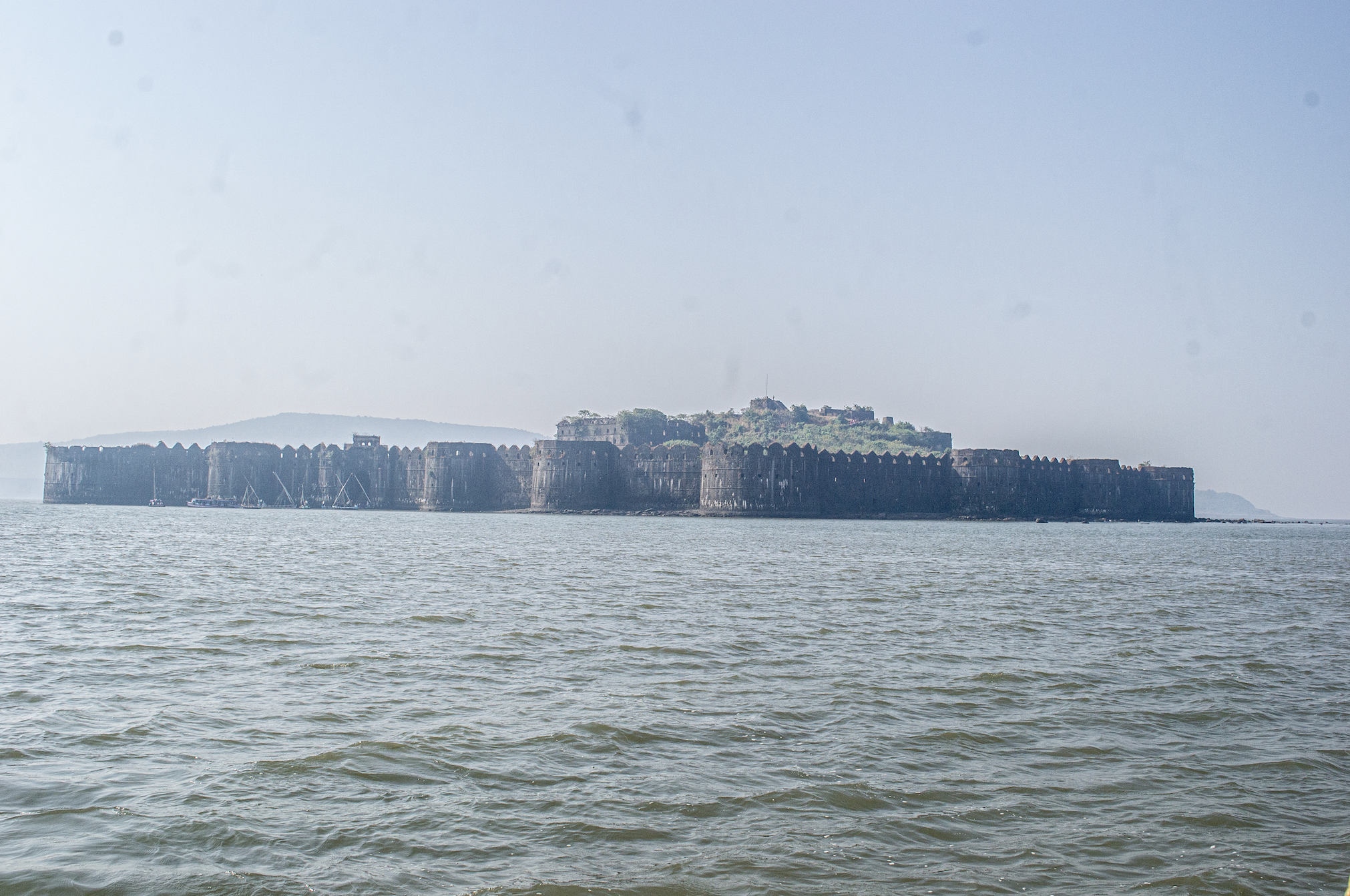
It was the festival of Holi and Medhekot was celebrating! Piram landed near the island posing as a merchant, and requested the chief to give him and his sailors asylum for the night, as the sea was getting rough and they needed to secure the expensive merchandise they were carrying. The kolis agreed and Piram unloaded huge baskets of silk and goods at Medhekot. And for the kindness of the kolis, he offered them liquor as gift. The kolis consumed the alcohol and got completely drunk.
In reality, the offloaded huge baskets/containers did not just have silk or goods, quite like the Trojan horse, it had soldiers hiding within. Once the enemy was drunk and incapacitated, Piram ordered his attack and took over the island. They captured Rama Koli, held him captive and killed his garrison and men.
This marked the beginning of an extensive reign of the Siddis. In due course, it also led to the demolition of the wooden fort, and in its place, the Siddis built Fort Janjira.
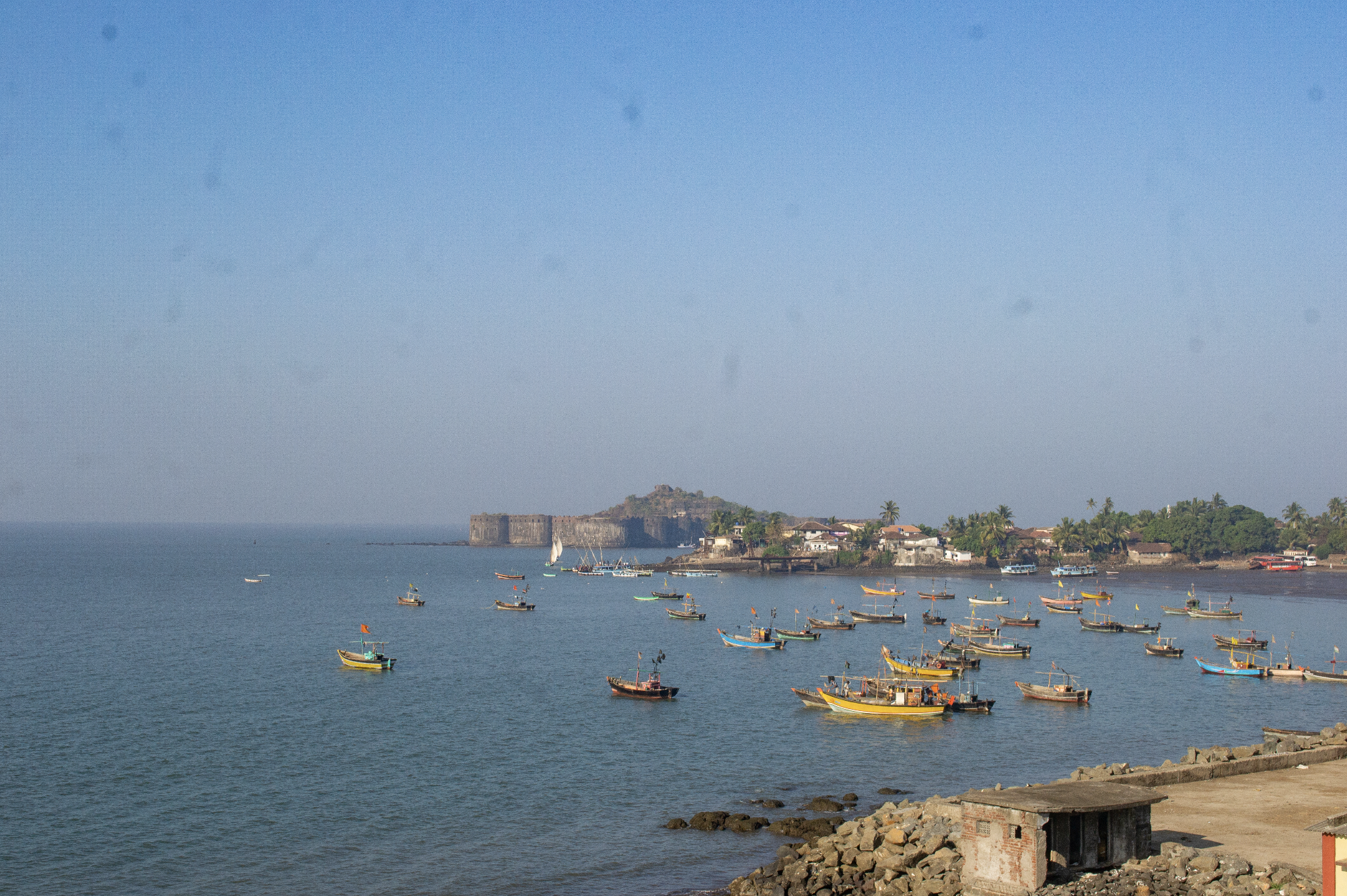
Over the years, many rulers like Chattrapati Shivaji Maharaj and his fearsome Marathas, then the Peshwas and later the Dutch, the Portuguese and even the British made various essays to capture this fort; but like a determined warrior Janjira fought back all their attempts, and remained impregnable, unconquered!
The Janjira Fort is a 22 acre area which comprised of a Darbar Mahal, Sheesh Mahal for the queen, a dargah, four masjids, a temple, surveillance room, a storehouse for explosives, two freshwater ponds and tombs of the important.
On 6th May, 1948, formalities of Janjira State to become part of Indian Union were completed and the Siddi rule came to an end. Up to 250 homes resided here till around 1970s. Around 1975 the Central Government took over the fort as everybody had left. After which it came under the Archeological Survey of India (ASI), under whose care and neglect, the fort continues to flourish and languish…
Chiktan
Not far from the natural bounty that is Kashmir, in the rain shadow of the Himalayas, beyond the ZojiLa Pass, begins the cold desert of Ladakh. On the outskirts of Kargil, once a bustling trade town connecting to the Silk Route, lie the ruins of Chiktan Fort. Known through the times by various names – Maryul, Kha-chumpa, Kia-Chha and Ma-Lo-Pho, the marvel that was once Chiktan, remains the identity of this outrageously beautiful desolate landscape.
The legend of Chiktan has its beginnings in nearby Gilgit-Baltistan, now situated in Pakistan Occupied Kashmir(POK). A prince of Gilgit – ThaTha Khan, much loved by the Balti people was driven from his homeland by his step brother who envied the more able prince. In a sequence that seems like out of the movies, ThaTha Khan made an escape that James Bond would be proud of and arrived at Chiktan, which charmed him such that he decided to base himself there. To fulfil his ambitions, he called for master architect Shinkhen Chandan and his son from Baltistan who, say the lores, took nine years, nine months and nine days to build a wonder of their times with woodwork so intricate that nothing like it existed in Ladakh or Baltistan. It lingers in the local memory that the fort once housed a tailspin room built on a tall tower that revolved with the air!
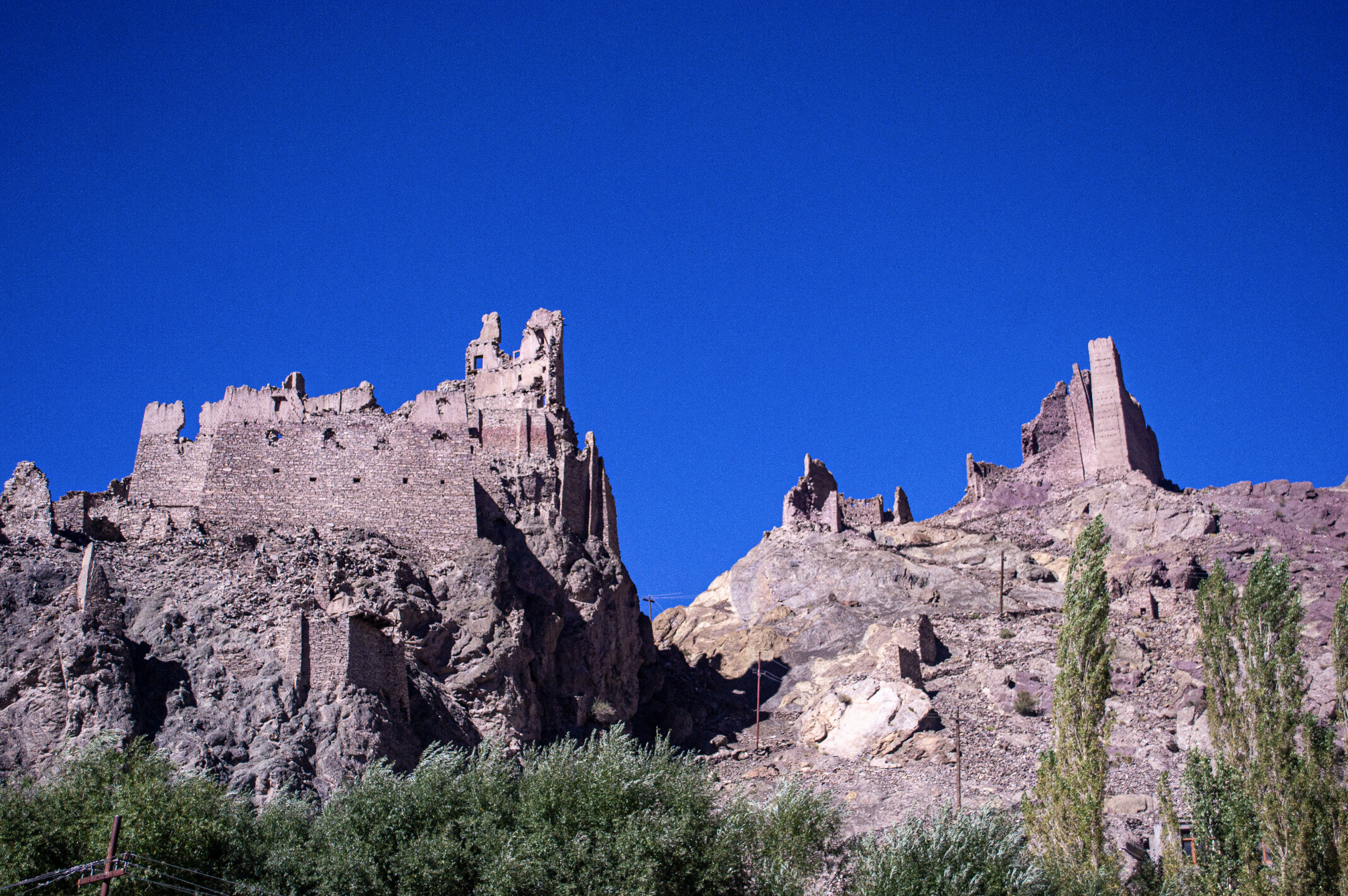
connecting to the Silk Route, lie the ruins of Chiktan Fort
Historians too assign the underpinnings of the fort to be laid by the very charismatic ThaTha Khan, though several credit another ruler Tsering Malik to have built the fort the way it appears now, in the 15 -16th century. Its history is one that is remembered for several extreme atrocities that somehow seem believable and even necessary in the harsh land. Execution meant being pushed off the mountain, but held skewered on long pointed logs for the scavenging birds to devour, leaving only bones to reach the earth. Naturally, the echoes of such events invoke phantoms of the past, and it`s a strong heart that walks these ruins once the darkness settles in…
As the Dogras committed to expansion, all of Ladakh, including Chiktan fell within their purview and the royal family too absconded to live in normal houses. Locals, still in awe of the fort and its craftsmanship, remember how Chitkan stood tall and proud till very recently when one of the descendants secured a contract to build a dispensary in the area, and pillaged the fort to use the wooden pillars, doors and even stones to construct it; bringing down in his greed the symbol of Chiktan`s strength, history, culture – its very identity.
Bhangarh Fort
Of late it has emerged as a popular site for haunted tourism. The Bhangarh Fort, situated at the edge of the Sariska Tiger Reserve in the Aravallis of the Alwar district of Rajasthan, is probably the most popular fort in recent times. Visited by paranormal specialist, featured in umpteen news reports and also the main location of a horror movie; most people have heard of Bhangarh, but few know about it.
The fort was built in the 17th century by the Kachwaha ruler of Amber, Raja Bhagwant Singh for his younger son Madho Singh in 1573 AD. Madho Singh’s brother was the celebrated Man Singh, who was the General of Mughal emperor Akbar.
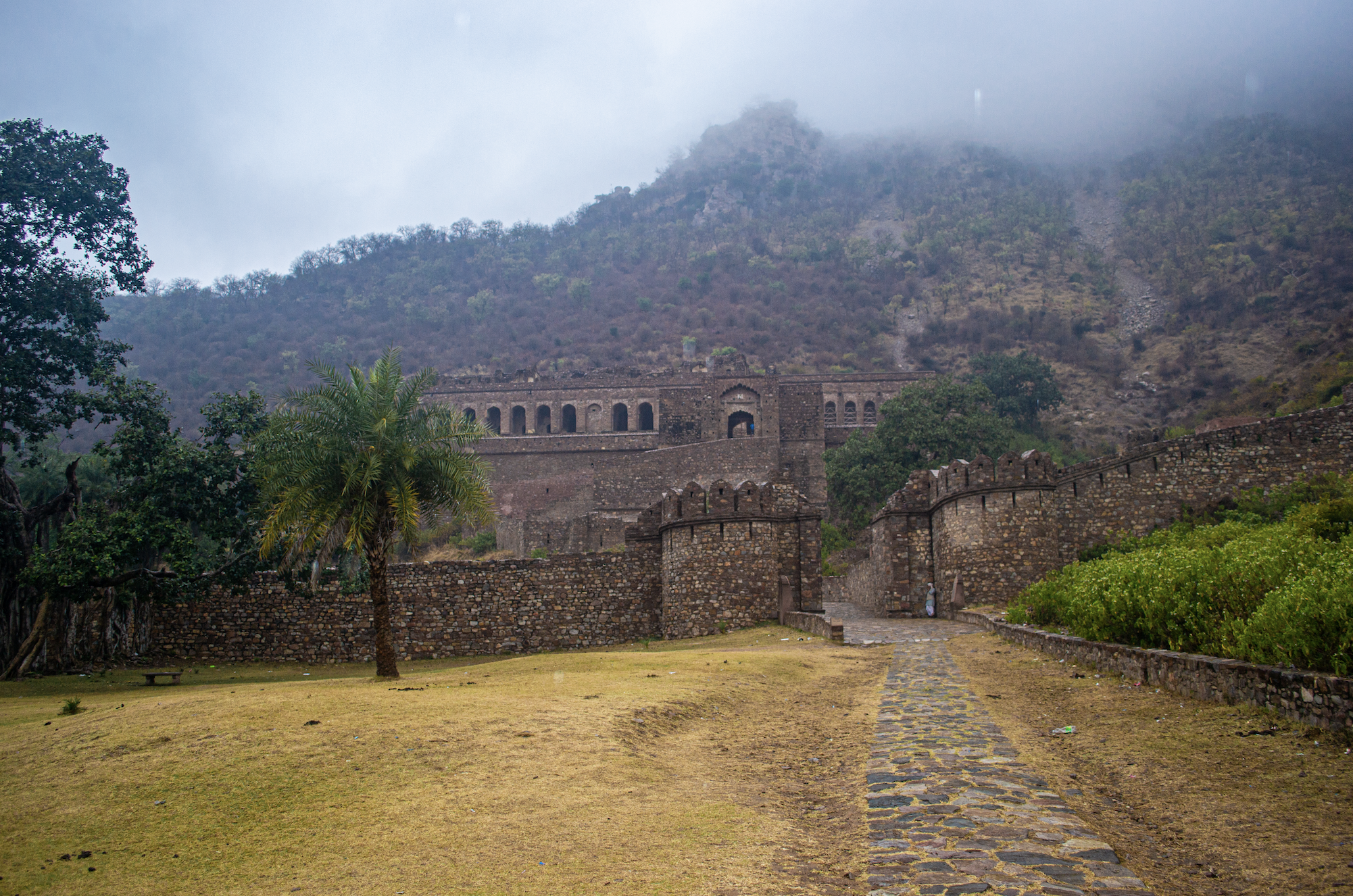
The most remarkable of its buildings are the temples of Gopinath, Shiva (Someshwar), Mangla Devi, Lavina Devi and Keshava Rai. The distinctive intricacy of carving that Rajasthan is known for, stands out in these temples, intact among the ruins around it. Other buildings include shops along the main road, several havelis, a mosque, a market and a palace. The palace was protected by two inner fortifications across the valley. The town is separated from the plain by ramparts with five gates. The main lane ends at the Shaiva temple with a water tank fed with a perennial stream of water that originates in the magical snake-infested sandal woods, that is what the country folk still affirm.
Bhangarh is synonymous with a tantrik Balak Nath, also known as Balu Nath. Folklore remembers him in stories featuring him, the founder of Bhangarh – Madho Singh, a beautiful queen named Ratnavali, and Ajab Singh, the grandson of Madho Singh and founder of the nearby fort of Ajabgarh. The various versions of the stories end similarly – through a curse by the tantrik that leads to the abandonment of Bhangarh.
History however records that when the Mughal Empire weakened after the death of Aurangzeb, Jai Singh II, the founder of Jaipur, annexed Bhangarh to his state by force in 1720. Neighbouring Ajabgarh invaded Bhangarh and the city was ransacked. An estimated ten thousand people lived in the city at the time. After the attack, the population was decimated, and post a famine in the late 18th century, the town was abandoned and has remained a ruin ever since, populated only by stories of ghosts that perhaps never were…
Kangra
Protected by the auspices of the nearby Kangra Shakti Peeth, the fort of Kangra, situated 20 kms from the town of Dharamsala in Himachal Pradesh, is often regarded as India’s oldest fort with claims of a continuous lineage from the times of the Mahabharat! The Katoch dynasty of Kangra are reputed to have their mythical origins from the Trigarta kingdom mentioned in the Mahabharat and Susharman Chand Katoch, the founder of the fort who was an ally of the Kauravas.
Spread over four kilometres, it is amongst the largest forts in India and its strategic location, strength, and wealth have seen invaders from Mahmud of Ghazni to Tughlaq, the Mughals, the Sikhs and the British. Like it is with wars and strong forts. Some were won, some lost. Wealth was gotten and given. Local legends boast of the Kangra Fort having 21 deep wells laden with treasure of which eight are said to have been robbed by Mahmud of Ghazni, five by the British and others still remain undiscovered.
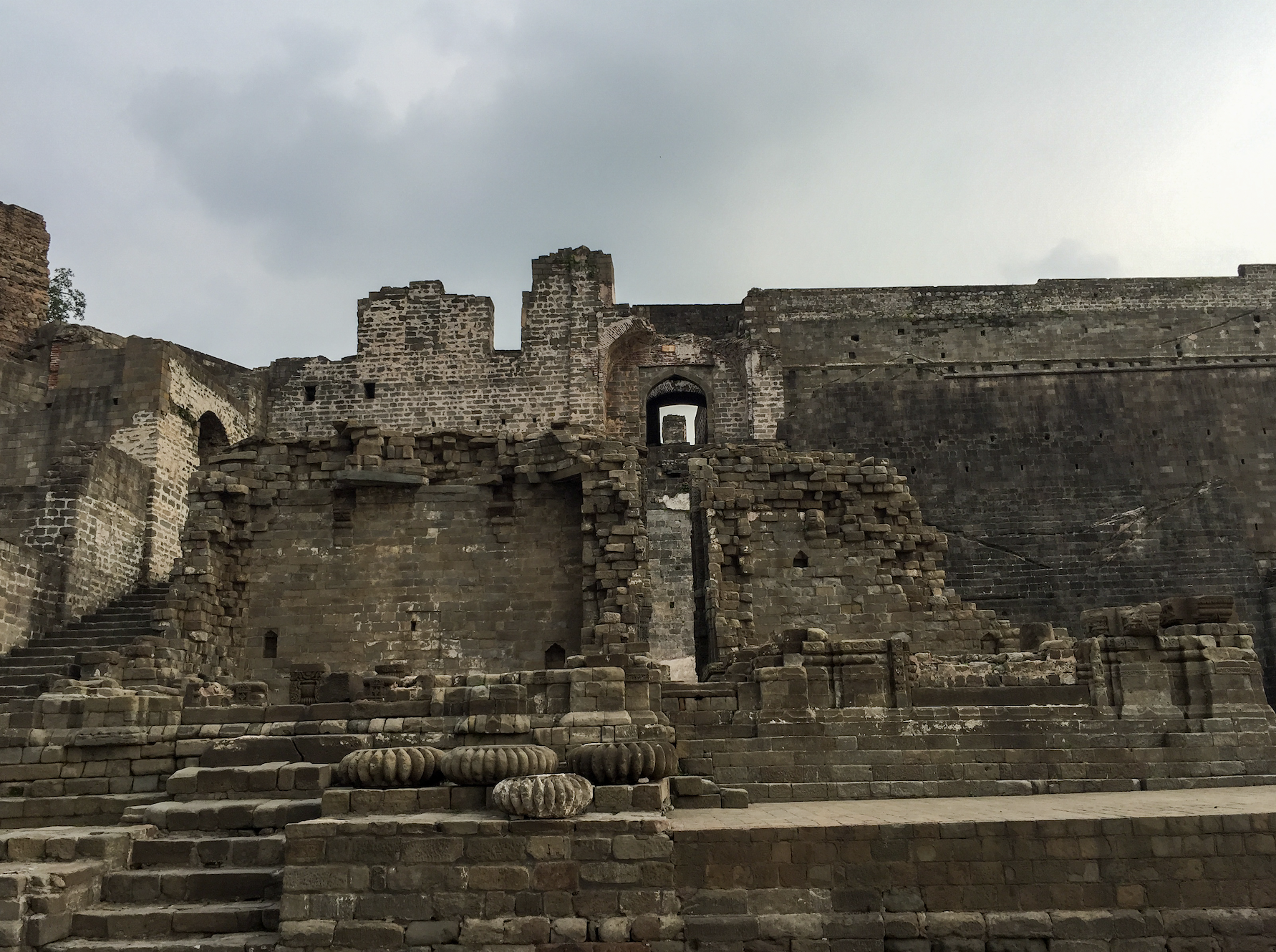
Unparalleled in its location at the edge of a cliff with a river flowing by and built with stone that speaks of the strength of the ages, Kangra Fort houses a number of temples including Shitala Mata Temple, Lakshmi Narayan Temple, Ambika Devi Temple and a Jain temple that had a colossal Rishabhnatha idol. The descendants of the Katoch rulers still visit and pray at the Ambika Devi Temple regularly.
Changing hands between the Katoch dynasty and invading rulers, the fort was finally with the Sikhs under Raja Ranjit Singh till 1846, after which the British took over. The earthquake of 1905 caused massive damage to the fort and the lack of upkeep had it fall to ruins. But oh! Such beautiful ruins…
Each weave of time is as intricate as it can be simply explained. Each weave distinct, and each fort, a knot in this weave. And when viewed together, knitting a picture as complex as it is straight forward. Telling stories that are disparate in space and time, yet they collide and create wondrous patterns and illustrations. Each event, associated with colour or sound that can create in the mind’s eye a masterpiece of art or music; and when expressed in words, it tells a story. A story of India, knotted together by ruins – majestic and rubble. A history, glorious and forsaken…

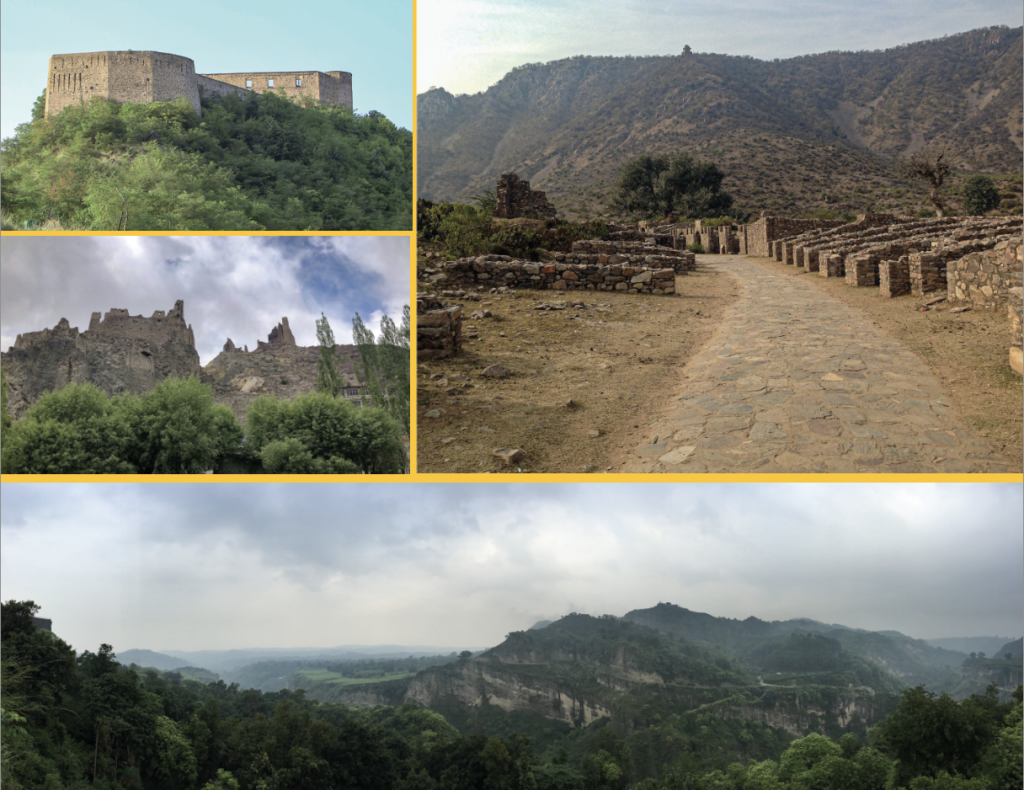
 [/column]
[/column]